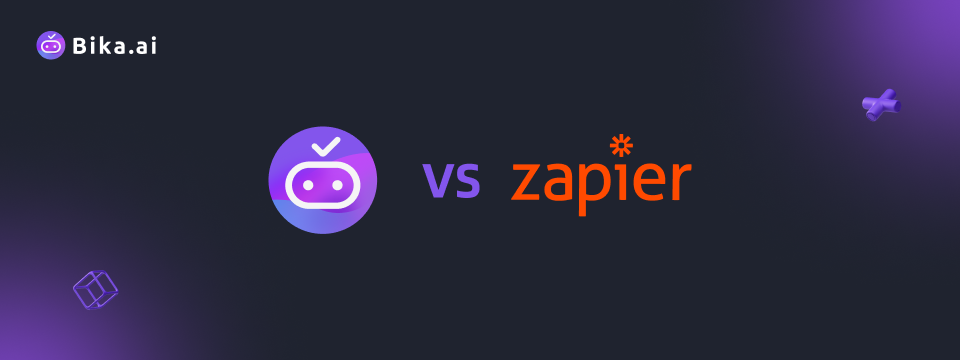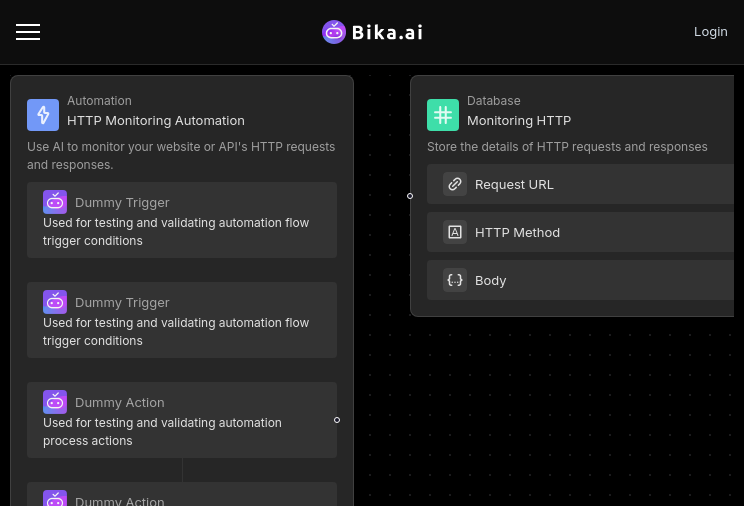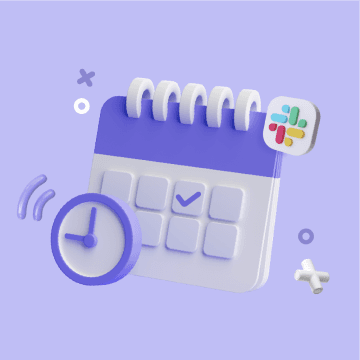
Identifying bottlenecks in business processes is no easy feat. It often requires meticulous analysis and the right tools. Many turn to Zapier for assistance, but now, Bika.ai's HTTP Monitoring template is emerging as a strong contender.

Let's take a look at the key features that set Zapier and Bika.ai apart:
| Feature | Zapier | Bika.ai |
|---|---|---|
| Pricing | Automation starts at $19.99/month + Database starts at $20/month | Starts at $9.99/month per seat |
| Automation per Month | Starts at 750 tasks/month | Starts at 30,000 runs/month |
| Database Integration | Database separates from automation, additional cost | Integrated visual database with automation |
| Maximum Records | 500,000 records for the highest plan | 1,500,000 records for the highest plan |
| Tables Offered | Up to 50 tables in the highest plan | Unlimited tables |
| Templates | Templates without pre-filled content | Plug-and-play templates with pre-filled content and detailed guides |
| Customization | Limited by app connections and plan limits | Extensive customization with API-first design |
| Integration | Over 6,000 apps | Over 6,000 apps through integrations with Zapier, Make, Pabbly, and others |
| Data Handling | Limited field types and views | 38 field types and 13 node resources |
| Proactive Automation | None | Proactive AI that manages and schedules tasks |
Bika.ai differentiates itself from Zapier in several significant ways:
Zapier's separation of database and automation leads to a fragmented user experience and increased costs. Bika.ai offers a seamless all-in-one environment that combines data analysis and complex workflow management.
Zapier's database has limitations in terms of tables and records, while Bika.ai supports unlimited tables and a much higher record capacity.
Zapier lacks proactive task management and decision support. Bika.ai actively engages, reminds, and provides AI-driven reports.
Zapier's templates require more configuration from scratch, while Bika.ai's come with detailed guides and pre-filled content.
Bika.ai seamlessly integrates with multiple connectors, enhancing its functionality and customization.

Automating the process of identifying bottlenecks brings numerous benefits to team collaboration. It boosts efficiency, saves time, reduces errors, allows for customization, offers convenience, and cuts costs. Professionals such as DevOps Engineers, QA Engineers, Web Developers, Data Analysts, and Operations Engineers can all reap the rewards.

The HTTP Monitoring template is straightforward to use:
Install the HTTP Monitoring Template through the platform. Once installation is complete, you will receive a success message and guidance for the next steps.
Before using HTTP monitoring, you need to enter your URL address. Click the prompt button and follow the instructions to complete the entry.
Set the monitoring frequency, for example, check HTTP status every minute. Configure trigger conditions and actions, such as logging detailed information about HTTP requests and responses.
View the automatically generated reports and performance analyses to understand the operational status and potential issues of your website or API.
The process of switching is simple:
Assess your existing workflows in Zapier and identify how they can be replicated or enhanced in Bika.ai.
Register for Bika.ai and explore its extensive template library to match or improve your current automations.
Export your data from Zapier Tables in a CSV or Excel format and import to Bika.ai, start benefiting from its robust automation features immediately.
In conclusion, Bika.ai's HTTP Monitoring template is a game-changer for identifying bottlenecks. It offers superior features, value, and ease of use compared to Zapier. Make the switch and unlock your team's potential for greater efficiency and success.





